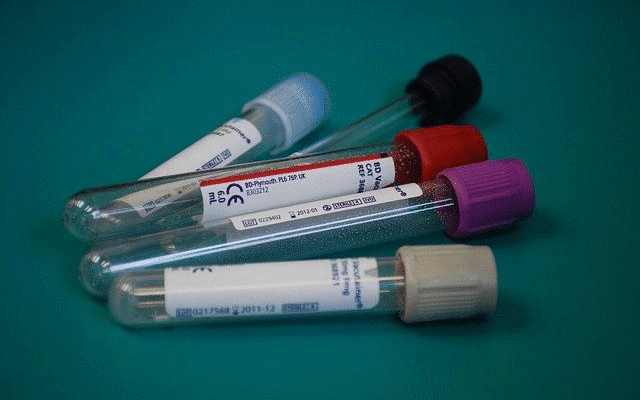As laboratories continue to play an essential role in various industries, compliance and regulation remain critical to ensuring the safety and accuracy of lab results.
The use of proper labeling within laboratories is an often-overlooked but crucial aspect of regulatory compliance. Lab labels serve as tools to classify, track, and identify samples and items accurately.
Not only do these labels ensure that laboratories comply with regulations, but they also contribute to maintaining the quality and integrity of lab processes.
We will explore the role of lab labels in compliance and regulation. We will highlight the importance of clear and accurate labeling in laboratories and how it can contribute to maintaining safety and preventing errors. Additionally, we will delve into the different types of labels and the crucial information that must be included on them.
By understanding the significance of lab labels in compliance and regulation, laboratory professionals can ensure effective management of their labs.
Lab labels play a crucial role in identifying, tracking, and organizing laboratory samples and equipment, ensuring accuracy, safety, and compliance with regulatory requirements.
Demonstrating Compliance:
Ensuring that laboratory operations comply with regulatory requirements is a significant, constant challenge for healthcare providers and laboratory managers.
Demonstrating compliance requires meticulous record-keeping, adherence to standardized processes, and the use of effective labeling systems that help support accurate tracking and traceability. Lab labels play an essential role in compliance and regulation by providing critical information about the specimen, test, or patient, such as patient details, date and time of collection, test type, and specimen type.
Inaccurate or incomplete labeling not only compromises patient safety but also puts labs at risk of non-compliance with regulatory requirements. Lab labels that are compliant with the most current regulations can help to ensure that correct information is provided and can be easily identified, audited, and tracked throughout the lab process.
Adherence to Regulations:
Adherence to regulations is a critical aspect of laboratory operations. With the increasing focus on safety and regulatory compliance, more stringent rules are being introduced to ensure the safety of laboratory users and the public.
This is where lab labels play a vital role in compliance and regulation. Lab labels must meet the specific guidelines and requirements set forth by various regulatory bodies, such as the Occupational Safety and Health Administration (OSHA) and the Environmental Protection Agency (EPA).
These regulations vary based on the nature of the laboratory operations and the types of materials being handled.
Therefore, lab managers must ensure that the labels used in their laboratories comply with all pertinent regulations to prevent potential liabilities and ensure the safety of lab personnel and the public.
Identification of Hazardous Materials:
The identification of hazardous materials is a critical component of any laboratory's safety protocols. Identifying and properly labeling hazardous materials is an essential step in ensuring the safety of laboratory staff and maintaining compliance with regulatory requirements.
In order to properly identify hazardous materials, laboratories must utilize appropriate labeling and marking systems that clearly communicate the type of hazard present and any necessary precautions that should be taken.
The use of lab labels, which are designed specifically for use in laboratory environments, is an effective means of ensuring that hazardous materials are properly identified and handled.
By clearly marking all containers of hazardous materials with the appropriate label, laboratories can help to reduce the risk of accidents and ensure compliance with important regulatory requirements.
Ensuring Traceability:
Traceability is a critical aspect of compliance and regulation when it comes to labeling in laboratory settings. It refers to the ability to track and record the journey of a product or sample from its origin to its current location. In many industries, traceability is not just a best practice but is also mandated by law.
Lab labels play a crucial role in ensuring traceability by providing information such as the date of production, batch number, lot number, and expiration date.
These labels help to minimize the risk of misidentification and errors, which can lead to severe consequences, including regulatory violations, recalls, and loss of reputation. Therefore, it is essential for laboratories to use high-quality and durable lab labels that can withstand the environmental conditions and remain legible throughout the product's life cycle, ensuring effective traceability and regulatory compliance.
Providing Valuable Documentation:
In the laboratory setting, compliance and regulation are crucial components in ensuring safety and efficacy of experiments. One practical way to adhere to these standards is through the use of lab labels.
Lab labels provide valuable documentation by clearly identifying the contents of each sample, including information such as the date of collection, the identity of the sample donor, and any potential hazardous properties.
This documentation not only ensures compliance with regulations, but also improves overall laboratory efficiency by streamlining the identification process and reducing the likelihood of errors or mix-ups.
In addition, lab labels aid in tracking samples from collection to analysis, preventing loss of valuable data and allowing for traceability in the event of an error or contamination. Ultimately, providing valuable documentation through lab labeling is a crucial aspect of maintaining compliance and regulation in the laboratory setting.


